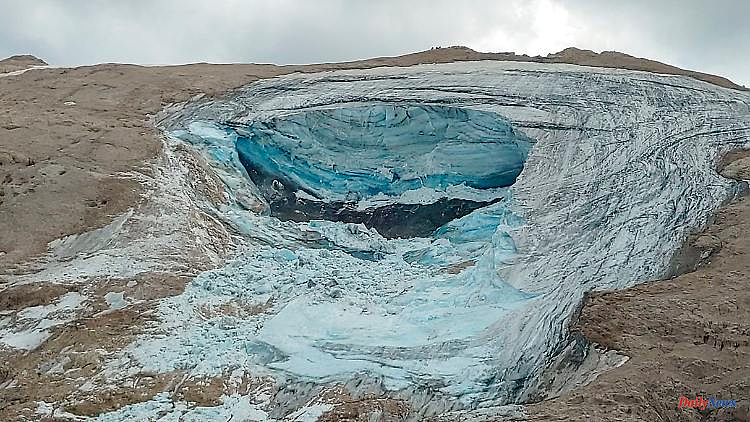In the Dolomites, a large piece of a glacier breaks off and falls down the valley. Several mountaineers are hit by the masses of ice, snow and debris. Germans could also be among the victims.
After the fatal glacier fall in northern Italy, the Federal Foreign Office assumes that Germans are involved in the accident. According to the current status, there are two people, said a spokeswoman. The Federal Foreign Office has not yet provided any further information. The honorary consul in Bolzano and the German embassy in Rome are in constant contact with the Italian authorities.
On Sunday, ice, snow and rocks broke off on Marmolada mountain in the Dolomites, burying several climbers. At least six people died. According to the Ansa news agency, almost 20 people are still missing. There is little hope of finding more survivors under the masses of ice, snow and rock, said Walter Cainelli from the mountain rescue service in the northern Italian province of Trentino.
The visibly shocked mountain rescuer Luigi Felicetti reported on the mission: "When we arrived on site, we were presented with an unbelievable picture. There were blocks of ice and huge stones everywhere." The Ansa news agency quoted investigators as saying that an "unimaginable bloodbath" took place on the mountain, after which "it will be difficult to determine the identity of the victims because the bodies were dismembered" by the ice and stone chunks.
Extreme mountaineer and environmentalist Reinhold Messner sees the accident as a consequence of climate change and global warming. "These eat away at the glaciers," said the 77-year-old. So-called ice towers - known as seracs - then form on the edges of the glacier, "which can be as big as skyscrapers or rows of houses," explained Messner.
Incidents like those on the Marmolada "we will see more often," he predicted, because "today there are many more rock and ice falls than in the past." And these can then have terrible consequences, like on Sunday on the massif on the border between the Trentino-Alto Adige and Veneto regions.












